 Before we
can discuss the book which looks at six institutions to understand the
linkages, it would be better to put upfront some concluding lines from the book
– the editors in the conclusions say “Therefore, there is no linear link
between micro-credit, poverty reduction and women's empowerment” (p.352). This
is stating the obvious, considering that there are several intervening
variables before such a link can be established. While one could be at peace
with the above conclusion because it is not counter-intuitive, there are
problems in either of the conclusions coming out of the studies. This is
because one has to engage with the editors on both the methodological rigour
and the commonality of framework. Possibly the book fails to establish both
these. At the same time one would like to engage with several of the issues
raised in the book because they are both interesting and important.
Before we
can discuss the book which looks at six institutions to understand the
linkages, it would be better to put upfront some concluding lines from the book
– the editors in the conclusions say “Therefore, there is no linear link
between micro-credit, poverty reduction and women's empowerment” (p.352). This
is stating the obvious, considering that there are several intervening
variables before such a link can be established. While one could be at peace
with the above conclusion because it is not counter-intuitive, there are
problems in either of the conclusions coming out of the studies. This is
because one has to engage with the editors on both the methodological rigour
and the commonality of framework. Possibly the book fails to establish both
these. At the same time one would like to engage with several of the issues
raised in the book because they are both interesting and important.
I will
first list out the problems I have with the book and get them out of the way
before we come into the actual content and look at the findings/observations of
the various authors. The first issue we need to deal with – not only in this
book – but in general, in most of the recent literature on micro-credit is that
of conflict of interest. For instance, the first paper on South Asia Poverty
Allieviation Programme (SAPAP) is co-authored by K Raju, who was the Chief
Executive of the Society for Elimination of Rural Poverty (SERP) that
implemented the programme and was deeply involved in implementation of the
phase that has been taken up for evaluation. In the case study of Share
Microfin Limited (SML), the author indicates that the study area was finalised
in consultation with SML, the staff helped in translation and identification of
locally relevant issues, in the absence of a budget for hiring and training of
field investigators, help was sought from SML personnel, and focus group
discussions were held with staff members (in addition to members) (p.118 and
119). In case of Swayam Shikshan Prayog, the investigation team comprised of
the team members of the host organisation and was done as a “participatory
exercise”. Irrespective of the rigour employed by these “host” organisations we
need to ask the question on whether the couclusions or data leading to the
conclusions would not be coloured by convictions of the interested parties.
However, involvement of the host organisation seems to be an accepted norm
these days and raising questions on such aspects is seen as being unreasonable.
There are
six micro-credit programmes that have been studied. All these institutions
actively seek the poorer segments of the society as their clients, and work
exclusively with women. Of the six programmes one is run by the government, one
programme is run by a for-profit company and the rest are run by
non-governmental organisations (NGO). The quest of the book is to see whether
there is an active link between micro-credit, poverty and empowerment of women.
Except for one organisation – Swayam Shikshan Prayag (SSP) which claims women's
empowerment as its overall objective, all other institutions claim poverty
reduction as the basic objective (p.54).
How does
one find out whether the programmes have had an impact on poverty or on
empowerment? One, there has to be a clear definition of what we would mean by
poverty, and how one could measure impact on the ex-ante state of poverty.
Similar is the case with empowerment. The editors try to place both these in a
context. However, when it comes to defining poverty, we find that while all the
secondary data quoted is on the poverty as defined by the government, the
studies largely depend on wealth ranking and housing index to justify the
movement in and out of poverty. Therefore there is a danger of inconsistency
between the micro measures used against the macro benchmarks. Empowerment
similarly is a nebulous term and the authors have found various surrogates to
justify or question the level of empowerment. Anecdotally what each of the
authors state makes great sense, but it would not be appropriate to draw common
conclusions across the studies because the measures used are quite diverse.
Therefore it would be good to look at each of these chapters as stand-alone
chapters, incidentally stitched into a book, rather than look at a common theme
that can be used to undertake inter-organisational or inter-geographical
comparisons.
The first
of the studies pertains to SAPAP programme being implemented by the government
of Andhra Pradesh. The portion on methodology indicates that fairly rigorous
tools were used. The paper is also placed in a broad theoretical framework that
seems to make sense. The data collected from the members of micro-credit groups
is compared against non-members – for instance the authors say that the
members of SHGs have better access than non-members with respect to every basic
need (p.70). Even the subjective perception of members seem to indicate
that there is a substantial reduction in poverty and also the programme has had
an impact on the causes of poverty as well – the access to productive and other
assets. However, while the paper is sprinkled with data and everything
represented in percentage terms, it is difficult to make sense on what basis
the authors claim any of these effects because except for an occasional
footnote, we are not presented with absolute numbers or tables. Therefore it is
difficult to figure out whether the basic sample sizes between members and
non-members were significant enough for us to take the conclusions seriously.
Indeed, while the authors do refer to significant amount of literature on
various other aspect, there is hardly any reference to the large methodological
debates that are going on in the area of impact assessment. For instance, a
portion of the chapter runs as follows: “Seventy one percent of the SHGs
reported having motivated some of the member families to send female children
to school and 16 percent extended support to widows to get married. Fifty one
percent of the SHGs reported having intervened in members' families to prevent
child marriages, 18 percent to prevent dowry harassement, 17 percent to prevent
temple prostitution, 31 percent to prevent male alcoholism and 16 percent to
prevent sex-selective abortion. (p.94)” So,
what does the reader conclude out of such a sentence?
The
second study looks at SML a for-profit micro-credit institution. Unlike the
first study, this hardly has numbers, but is broadly based on description of
the internal processes of the organisation, profile of leadership and the
process in which leadership emerges. These processes certainly provide some
insights into how “empowerment” could potentially happen. It is clear that the
parameters used in the second chapter are different from the first. The study
on SML talks about linkage of savings and credit, it talks about sustainability
and internal rules. Obviously these are the parameters with which the
organisation is constantly engaging itself. When one makes a point about the
issue of conflict of interest, it is evident in this particular case as to how
the parameters used by SML itself has dictated the parameters by the external
researcher. In addition, one instance where the researcher's objectivity could
have been compromised by influences from employees participating in the
research is evident in this statement “Weekly payments were not considered a
problem as it reduced their interest burden and eased repayments (p.136).” This
statement is factually incorrect in the context of SML. SML charges interest to
its borrowers on a flat basis and the interest rate is fairly high compared to
the alternatives from the formal systems. However the author makes some
interesting observations which possibly indicate some level of livelihood
diversification and reduction of vulnerability – that the borrowers have moved
away from traditional activities to new enterprises such as petty shops,
bicycle rentals and other activities that fetch regular cash flows. What is
interesting to note in the study is that the moneylender interest rates have
not reduced as they are lending to the poor among non-members and non-poor
households. This is a small indication that SML might not have made as much
impact in reaching out or grabbing the moneylender market share.
The study
of Dhan Foundation follows a similar pattern – there is some detailed
documentation of the internal processes and later it looks at the impacts on
empowerment. The author admits that it was difficult to undertake a structured
sample survey, but by all indications seems to have gone about the study fairly
independently. Unlike SML where most of the processes are driven externally by
the organisation, in case of Dhan, most of the groups are expected to be
autonomous and also are encouraged to deal with the bank and other agencies.
Relatively speaking it appears that this approach is more empowering – and the
author also cites instances where the older groups nurture the new SHGs.
The study
of SSP tries to make a difference between the savings and credit groups and
self-help groups. Since this was the only institution that had listed
“empowerment” as its major objective, it is important to look at it from that
perspective. The methodology adopted by the author is to have a participatory
approach. Unlike the other studies, here the author takes enough pain to
explain to the reader how objectivity has been achieved in the particular
study. However there is one anecdotal piece of information which uses “access
to information” as one of the surrogates of empowerment – where the women
got access to the information on PDS so that they could monitor the
availability , quantities and quality of rations and other stocks (p.. Well
a good surrogate, till we come to the anti-climax when we learn that this
privilege to information was lost soon after the chief executive officer of the
district council changed. If this post script was not there, one would have
assumed with this surrogate measure that the women were more empowered because
of micro-credit. A clear limitation of even the anecdotal approach that has
been clearly brought out.
The study
of Lokdrusti is different from the rest of the studies. Here the author seems
to take a position that before one can look at the larger impact of
micro-credit, it is important to look at how the host entity is, as an
institution for the basic purpose that has been ascribed to it. The line taken
is that - if you are a micro-credit institution, much before you are evaluated
on anything else, it is important that you are a good micro-credit institution
first. This is similar to the issue of sustainability examined in the case of
SML. The author genuinely tries to generate tables, brings in hard data and
then tries to look at the issues fairly objectively. (I should admit to a
conflict of interest from my side as I worked closely under this author during
the early part of my career and the opinion might be coloured by the
interactions I have had with her over all these years).
 The last
study pertains to ASA, Tamilnadu. The methods used are softer and
participatory. Therefore the conclusions and interpretations drawn are from the
subjective observations. However the author has many insightful observations
that help us to engage with the topic for a longer time. There are statements
that indicate the possibility that micro-credit clients had greater incomes to
meet emergency health needs, the data cited is “it was observed that six
infants had died in non-member households in the five villages studied, but
only two had died in the case of member households. (p.311)”. Such
interpretation of data could be tenuous unless we are able to establish the
significance of the sample size and its statistical importance. However, there
are other interesting bits of information on which one would like to take
issues with the author who claims that one of the measures of inclusion of
empowerment is that a dalit woman has been accepted as a group leader. What is
most interesting in this chapter is the author does try to pry open the strong
ring fencing that is there in Grameen type of micro-credit institutions by
suggesting that the groups should build linkages with the external world,
including banks and PRIs (p.319). When this happens in a Grameen type of
operation, one really could possibly term this as the empowerment of the group
if not of the women who are a part of it.
The last
study pertains to ASA, Tamilnadu. The methods used are softer and
participatory. Therefore the conclusions and interpretations drawn are from the
subjective observations. However the author has many insightful observations
that help us to engage with the topic for a longer time. There are statements
that indicate the possibility that micro-credit clients had greater incomes to
meet emergency health needs, the data cited is “it was observed that six
infants had died in non-member households in the five villages studied, but
only two had died in the case of member households. (p.311)”. Such
interpretation of data could be tenuous unless we are able to establish the
significance of the sample size and its statistical importance. However, there
are other interesting bits of information on which one would like to take
issues with the author who claims that one of the measures of inclusion of
empowerment is that a dalit woman has been accepted as a group leader. What is
most interesting in this chapter is the author does try to pry open the strong
ring fencing that is there in Grameen type of micro-credit institutions by
suggesting that the groups should build linkages with the external world,
including banks and PRIs (p.319). When this happens in a Grameen type of
operation, one really could possibly term this as the empowerment of the group
if not of the women who are a part of it.
As a
student I recall having heard Dr.V Kurien talk about the Operation Flood when
he had said “Is it not a slap on the caste system when a brahmin has to
stand behind a harijan in the queue for pouring milk?” and one really
thought yes, it was, till one realised that but for this act of following the
rules of the milk society, nothing in the village had altered the traditional
caste relations. Thus, when social scientists raised the issue of the impact of
Operation Flood programme, the usual defence of the National Dairy Development
Board was that Operation Flood was a programme of economic and not social
intervention. Just as well, except that the protagonists themselves had claimed
social impacts. The dalit being elected as a leader might be just one such
instances that may need to be objectively verified in the case of ASA.
The
editors in their introduction argue that the critical mass of SHGs while
being empowering could also be usurped by larger economic interests to promote
their own mandates by which women become instruments and further become
disempowered (p.46) and in extending this argument take the example of Hindustan
Lever “using” groups to sell their brand of shampoos. The editors have to
realise that very much the way outside researchers have expectations of
empowerment and poverty eradication it is not uncommon for others also to have
other expectations. Irrespective of the expectations it is for the groups to
decide what they want to do with their own collective, and if they are happy
selling shampoos as a collective we possibly should respect that call and
understand the entrepreneural spirit behind it rather than take an ideological
view that the “hope” I sell is better than the “soap” you sell.
The above comments notwithstanding, I do believe that this is a very useful book for understanding the various pulls and pressures under which micro-credit operates in this country. While one can take an argument that the entire edifice of micro-credit is a response to market failure – failure of the institutions to reach the smaller client, the expectations seem to be that this should work as a transformational magic wand. While several people have indeed delved into the developmental aspects of micro-credit (including this author), it would be difficult to attribute causality unless we have all the parameters under absolute control and put them in measurable formats.
 On the
whole the book is very well written and is engaging. It invites the reader to
take up issues with the authors and the editors and opens up several issues for
debate. In a sector, where most of the work that happens remains in spiral
bound reports, it is important that more and more books come out and open up
larger debates not only on the nature of the micro-credit programmes, but also
on the methodological issues and on overall impacts. The book is really a very
useful addition to and helps to extend the debate to a higher intellectual
plane and is thus a very welcome addition. It is also an important book for the
practitioners to possess, so that they also understand the burden of
expectations laid out on them by the world at large.
On the
whole the book is very well written and is engaging. It invites the reader to
take up issues with the authors and the editors and opens up several issues for
debate. In a sector, where most of the work that happens remains in spiral
bound reports, it is important that more and more books come out and open up
larger debates not only on the nature of the micro-credit programmes, but also
on the methodological issues and on overall impacts. The book is really a very
useful addition to and helps to extend the debate to a higher intellectual
plane and is thus a very welcome addition. It is also an important book for the
practitioners to possess, so that they also understand the burden of
expectations laid out on them by the world at large.
Micro-Credit, Poverty and Empowerment
Linking the Triad
Editors: Neera
Burra, Joy Deshmukh-Ranadive and Ranjani K Murthy
Sage Publications), New Delhi 2005
pp.309
Price: Rs.395 (Paper)
ISBN 0-7619-3366-2






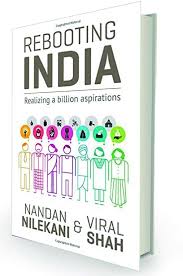








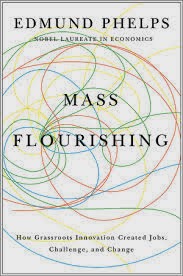









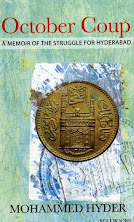
















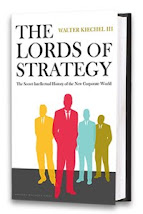











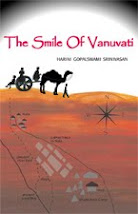


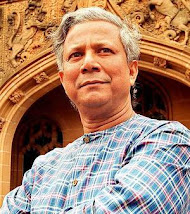








![Hyderabad: A Book [or two] and A Movie](http://3.bp.blogspot.com/_mxWA9ZVkKhQ/S0vnLAO90CI/AAAAAAAABYM/WgbSbAcAaEk/S214/luther1.0.jpg)

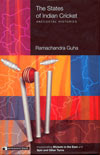





![Two Lives [and this is not about Vikram Seth]](http://1.bp.blogspot.com/_mxWA9ZVkKhQ/S0vjkyDYRvI/AAAAAAAABXM/mJGK-_gZiNg/S214/mansur.jpg)





No comments:
Post a Comment